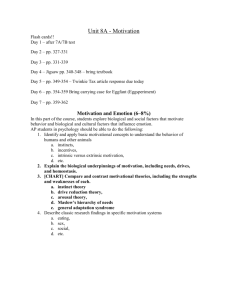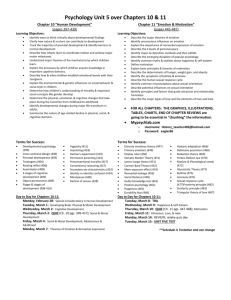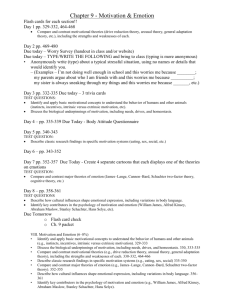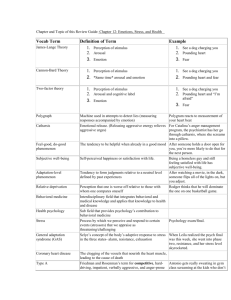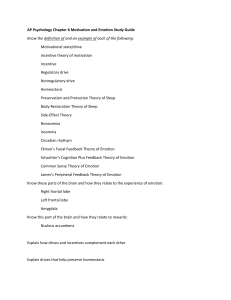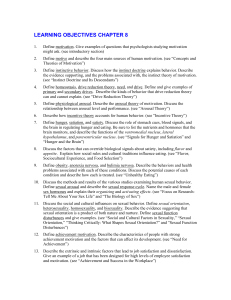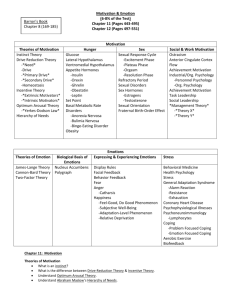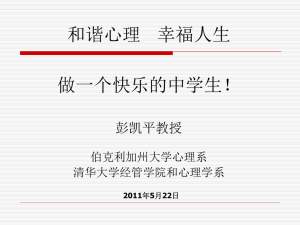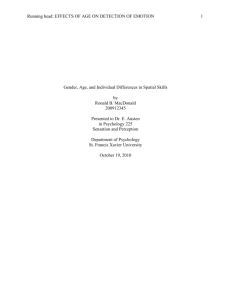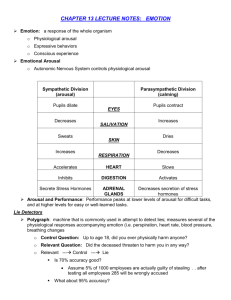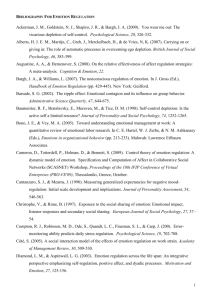U9 Cerqueira guide
advertisement
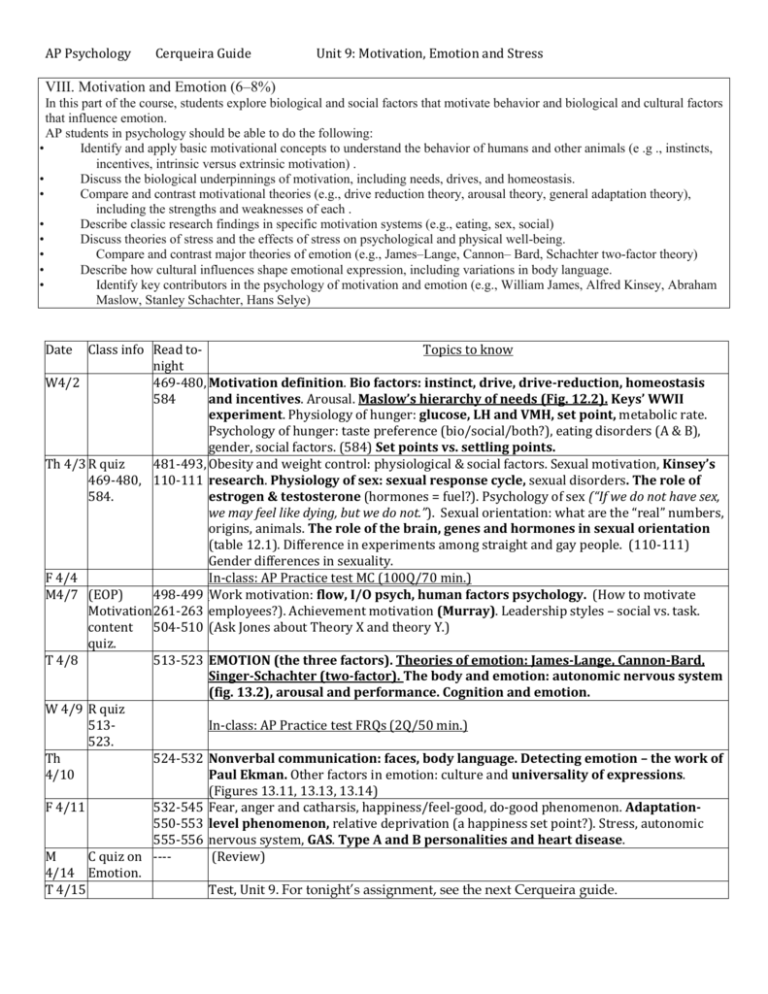
AP Psychology Cerqueira Guide Unit 9: Motivation, Emotion and Stress VIII. Motivation and Emotion (6–8%) In this part of the course, students explore biological and social factors that motivate behavior and biological and cultural factors that influence emotion. AP students in psychology should be able to do the following: • Identify and apply basic motivational concepts to understand the behavior of humans and other animals (e .g ., instincts, incentives, intrinsic versus extrinsic motivation) . • Discuss the biological underpinnings of motivation, including needs, drives, and homeostasis. • Compare and contrast motivational theories (e.g., drive reduction theory, arousal theory, general adaptation theory), including the strengths and weaknesses of each . • Describe classic research findings in specific motivation systems (e.g., eating, sex, social) • Discuss theories of stress and the effects of stress on psychological and physical well-being. • Compare and contrast major theories of emotion (e.g., James–Lange, Cannon– Bard, Schachter two-factor theory) • Describe how cultural influences shape emotional expression, including variations in body language. • Identify key contributors in the psychology of motivation and emotion (e.g., William James, Alfred Kinsey, Abraham Maslow, Stanley Schachter, Hans Selye) Date Class info Read toTopics to know night W4/2 469-480, Motivation definition. Bio factors: instinct, drive, drive-reduction, homeostasis 584 and incentives. Arousal. Maslow’s hierarchy of needs (Fig. 12.2). Keys’ WWII experiment. Physiology of hunger: glucose, LH and VMH, set point, metabolic rate. Psychology of hunger: taste preference (bio/social/both?), eating disorders (A & B), gender, social factors. (584) Set points vs. settling points. Th 4/3 R quiz 481-493, Obesity and weight control: physiological & social factors. Sexual motivation, Kinsey’s 469-480, 110-111 research. Physiology of sex: sexual response cycle, sexual disorders. The role of 584. estrogen & testosterone (hormones = fuel?). Psychology of sex (“If we do not have sex, we may feel like dying, but we do not.”). Sexual orientation: what are the “real” numbers, origins, animals. The role of the brain, genes and hormones in sexual orientation (table 12.1). Difference in experiments among straight and gay people. (110-111) Gender differences in sexuality. F 4/4 Ind In-class: AP Practice test MC (100Q/70 min.) M4/7 (EOP) 498-499 MotWork motivation: flow, I/O psych, human factors psychology. (How to motivate Motivation 261-263 employees?). Achievement motivation (Murray). Leadership styles – social vs. task. content 504-510 (Ask Jones about Theory X and theory Y.) quiz. T 4/8 513-523 EMOTION (the three factors). Theories of emotion: James-Lange, Cannon-Bard, Singer-Schachter (two-factor). The body and emotion: autonomic nervous system (fig. 13.2), arousal and performance. Cognition and emotion. W 4/9 R quiz 513In-class: AP Practice test FRQs (2Q/50 min.) 523. Th 524-532 Nonverbal communication: faces, body language. Detecting emotion – the work of 4/10 Paul Ekman. Other factors in emotion: culture and universality of expressions. (Figures 13.11, 13.13, 13.14) F 4/11 532-545 Fear, anger and catharsis, happiness/feel-good, do-good phenomenon. Adaptation550-553 level phenomenon, relative deprivation (a happiness set point?). Stress, autonomic 555-556 nervous system, GAS. Type A and B personalities and heart disease. M C quiz on ---(Review) 4/14 Emotion. T 4/15 Test, Unit 9. For tonight’s assignment, see the next Cerqueira guide.

